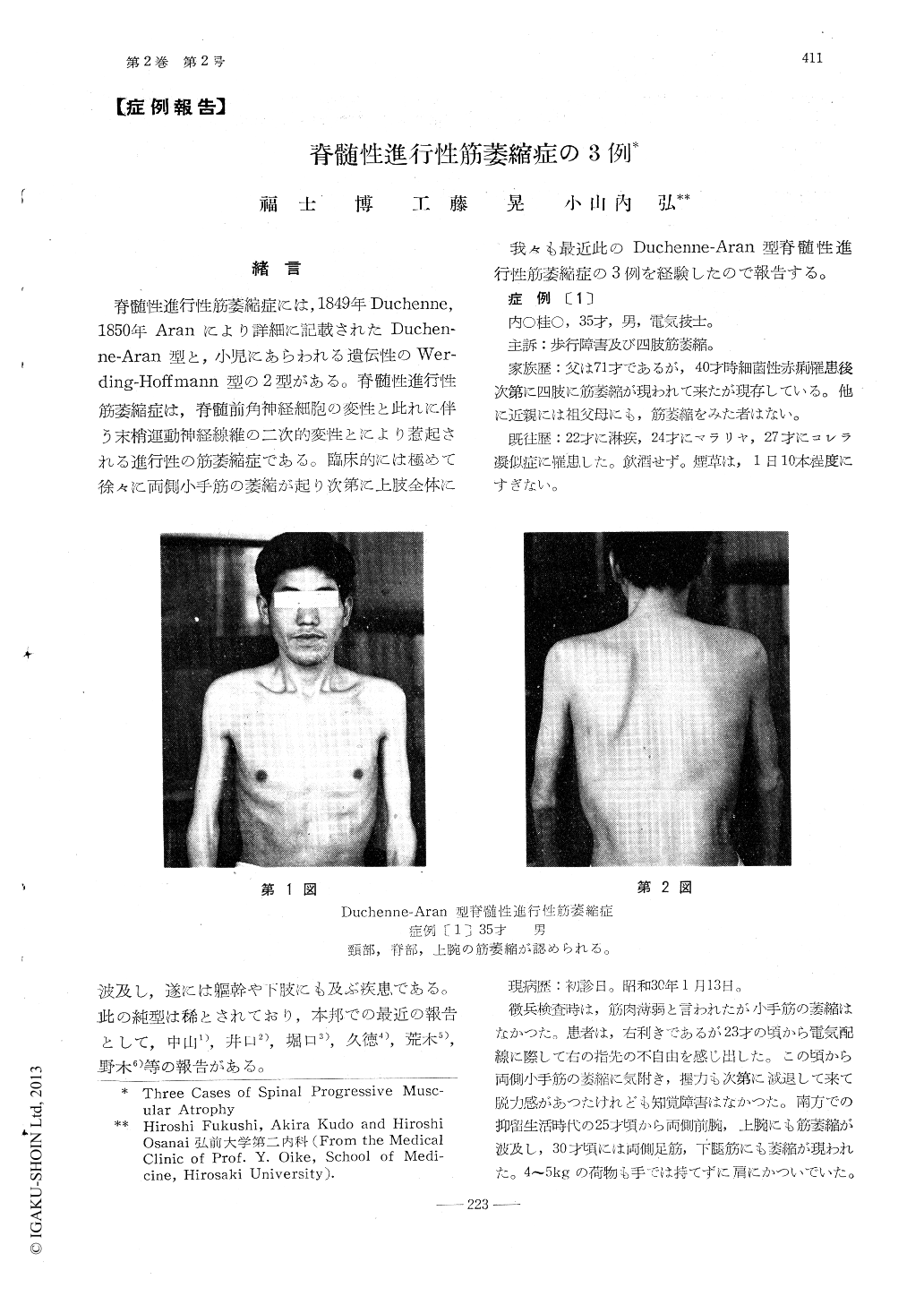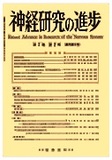Japanese
English
- 有料閲覧
- Abstract 文献概要
- 1ページ目 Look Inside
緒言
脊髄性進行性筋萎縮症には,1849年Duchenne,1850年Aranにより詳細に記載されたDuchenne-Aran型と,小児にあらわれる遺伝性のWerding-Hoffmann型の2型がある。脊髄性進行性筋萎縮症は,脊髄前角神経細胞の変性と此れに伴う末梢運動神経線維の二次的変性とにより惹起される進行性の筋萎縮症である。臨床的には極めて徐々に両側小手筋の萎縮が起り次第に上肢全体に波及し,遂には躯幹や下肢にも及ぶ疾患である。此の純型は稀とされており,本邦での最近の報告として,中山1),井口2),堀口3),久徳4),荒木5),野木6)等の報告がある。
我々も最近此のDuchenne-Aran型脊髄性進行性筋萎縮症の3例を経験したので報告する。
The first case is a right-handed 35-year-old man, who has complained of muscular atrophy of both hands since the age of 23, and, at present, demonstrates muscular atrophy of the four extremities and gait disturbance. In his past history, he has contracted gonorrhea at the age of 22, and malaria at 24. In his family history, his father, 71-year-old, has had muscular atrophy of the four extremities after getting dysenteria at the age of 40. The second case is a right-handed 56-year-old man, who has suffered from muscular atrophy of the right hand since the age of 55, and, at present, shows muscular atrophy of the right arm and leg and gait disturbance. In his past history, he has had a trauma on his waist. The third case is a right-handed 45-year-old man, who has complained of muscular atrophy of both hands since the age of 35, and, at present, demonstrates muscular atrophy of the four extremities where he feels fibrillation and paresthesia. In his past history, he has had catarrhal jaundice at the age of 26. No disturbance of swallowing, phonation, mastication, respiration, urination and defecation is found in all the three cases. The first case lacks in all the tendon reflexes of the four extremities, the second one only in those of the biceps and triceps of the right arm and the third is normal in reflexes. No pathological reflex is found in all the cases. The former two cases have no sensory disturbance, but the third case has hypalgesia and thermohypesthesia in the regions of C2-8 L3-5and S1-2. The urine creatin amounts to 144mg/day in the first case, to 147mg/day in the second and to 130mg/day in the third. The urine creatinine amounts to 0.75g/day in the first case, to 0.45g/day in the second and to 1.91g/day in the third. The electromygrams at rest at the atrophic muscles show fasciculation-voltage in all the cases, and fibrillation-voltage in the latter two cases. The elctromyograms at voluntary effort show synchronation voltage in all the cases, and fasciculation-voltage and low amplitude N. M. N.-voltage in the third case. From the clinical and electromyographic findings, the two former cases are to be diagnosed as Duchenne-Aran form of spinal progressive muscular atrophy, and the third case as an intermediate one between Duchenne-Aran form of spinal progressive muscular atrophy and Charcot Marie, J. Hoffmann form of neural progressive muscular atrophy.

Copyright © 1957, Igaku-Shoin Ltd. All rights reserved.


